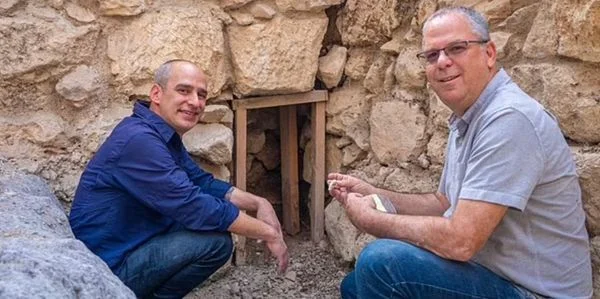A recent groundbreaking archaeological study conducted in ancient Jerusalem has provided new evidence that aligns with the Biblical narrative. This exciting discovery challenges previous beliefs and showcases the importance of combining scientific investigation with historical and biblical accounts. In doing so, it strengthens the view that Jerusalem was more extensive and developed during the reigns of David and Solomon than previously assumed.

Gaining a Fresh Perspective
The focal point of this study is a wall located in the City of David, which is considered the original heart of Jerusalem as depicted in the Bible. Historically, experts attributed the construction of this wall to Hezekiah, King of Judah, who reigned in the 7th and 8th centuries BC. The prevalent belief was that Hezekiah built the fortification to withstand the Assyrian Empire’s threat following the fall of the northern Kingdom of Israel.
An Unexpected Twist
However, the recent investigation conducted by the Israel Antiquities Authority (IAA), Tel Aviv University, and the Weizmann Institute of Science has unveiled a surprising revelation. Through the use of advanced carbon-14 dating techniques, the research team accurately determined the timeline of the wall’s construction. Despite the challenges of dating this ancient period, their findings definitively attribute the creation of the fortification to Hezekiah’s great-grandfather, Uzziah.
Dr. Joe Uziel from the IAA explains, “For decades, the assumption was that this wall was built by Hezekiah, King of Judah. But we now have compelling evidence that it dates back to the days of King Uzziah, as hinted at in the Bible.”
Bridging Ancient Texts and Scientific Evidence
Biblical references, such as the Second Book of Chronicles, describe Uzziah’s efforts in constructing towers at various points in Jerusalem’s city walls. Furthermore, the Book of Amos even mentions an earthquake that occurred “two years before the earthquake when Uzziah was king of Judah.”
This discovery not only rectifies the historical timeline but also sheds light on our understanding of ancient Jerusalem. The research reveals that Jerusalem expanded westward earlier than previously believed, during the reign of King Jehoash – five generations before Hezekiah.
According to Dr. Yuval Gadot from Tel Aviv University, “The new findings support the idea that Jerusalem experienced growth and expansion towards Mount Zion during the ninth century BC. This occurred during the reign of King Jehoash, a hundred years before the Assyrian exile.”
Embracing the Convergence of Science and Scripture
By identifying specific buildings and relating them to mentioned kings in biblical accounts, this study successfully weaves together scientific evidence and biblical narratives. This trailblazing achievement provides fresh insights into Jerusalem’s ancient history, strengthening the link between faith and science.
This newfound evidence not only bolsters the belief in the Bible’s historicity but also grants us a deeper understanding of ancient civilizations and their remarkable architectural accomplishments. The fusion of science and scripture continually unravels the enigmatic past, uncovering captivating narratives concealed within ancient walls.
